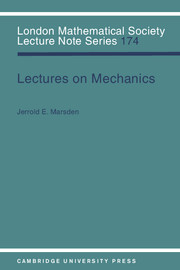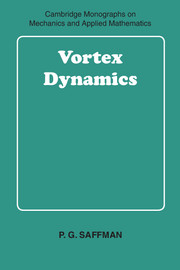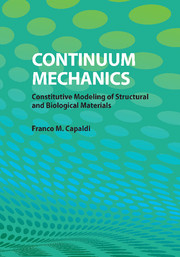Refine search
Actions for selected content:
8126 results in Fluid dynamics and solid mechanics
Introduction
-
- Book:
- Unsteady Combustor Physics
- Published online:
- 05 October 2012
- Print publication:
- 27 August 2012, pp xiii-xvi
-
- Chapter
- Export citation
11 - Forced Response I – Flamelet Dynamics
-
- Book:
- Unsteady Combustor Physics
- Published online:
- 05 October 2012
- Print publication:
- 27 August 2012, pp 317-363
-
- Chapter
- Export citation
Solutions
-
- Book:
- Unsteady Combustor Physics
- Published online:
- 05 October 2012
- Print publication:
- 27 August 2012, pp 406-453
-
- Chapter
- Export citation
7 - Flame–Flow Interactions
-
- Book:
- Unsteady Combustor Physics
- Published online:
- 05 October 2012
- Print publication:
- 27 August 2012, pp 199-224
-
- Chapter
- Export citation
5 - Acoustic Wave Propagation I – Basic Concepts
-
- Book:
- Unsteady Combustor Physics
- Published online:
- 05 October 2012
- Print publication:
- 27 August 2012, pp 124-153
-
- Chapter
- Export citation
ANZ VOLUME 53 ISSUE 2 COVER AND FRONT MATTER
-
- Journal:
- The ANZIAM Journal / Volume 53 / Issue 2 / October 2011
- Published online by Cambridge University Press:
- 15 August 2012, pp. f1-f2
-
- Article
-
- You have access
- Export citation
ITERATIVE SOLUTION OF SHIFTED POSITIVE-DEFINITE LINEAR SYSTEMS ARISING IN A NUMERICAL METHOD FOR THE HEAT EQUATION BASED ON LAPLACE TRANSFORMATION AND QUADRATURE
- Part of
-
- Journal:
- The ANZIAM Journal / Volume 53 / Issue 2 / October 2011
- Published online by Cambridge University Press:
- 15 August 2012, pp. 134-155
-
- Article
-
- You have access
- Export citation
ANZ VOLUME 53 ISSUE 2 COVER AND BACK MATTER
-
- Journal:
- The ANZIAM Journal / Volume 53 / Issue 2 / October 2011
- Published online by Cambridge University Press:
- 15 August 2012, pp. b1-b6
-
- Article
-
- You have access
- Export citation

Buoyancy Effects in Fluids
-
- Published online:
- 05 August 2012
- Print publication:
- 01 February 1973

Colloidal Dispersions
-
- Published online:
- 05 August 2012
- Print publication:
- 07 December 1989

Lectures on Mechanics
-
- Published online:
- 05 August 2012
- Print publication:
- 30 April 1992

Vortex Dynamics
-
- Published online:
- 05 August 2012
- Print publication:
- 29 January 1993

Continuum Mechanics
- Constitutive Modeling of Structural and Biological Materials
-
- Published online:
- 05 August 2012
- Print publication:
- 18 June 2012
3 - ANALYSIS OF THREE-DIMENSIONAL TRUSS STRUCTURES
-
- Book:
- Worked Examples in Nonlinear Continuum Mechanics for Finite Element Analysis
- Published online:
- 05 October 2012
- Print publication:
- 02 August 2012, pp 28-43
-
- Chapter
- Export citation
6 - HYPERELASTICITY
-
- Book:
- Worked Examples in Nonlinear Continuum Mechanics for Finite Element Analysis
- Published online:
- 05 October 2012
- Print publication:
- 02 August 2012, pp 82-94
-
- Chapter
- Export citation
Contents
-
- Book:
- Worked Examples in Nonlinear Continuum Mechanics for Finite Element Analysis
- Published online:
- 05 October 2012
- Print publication:
- 02 August 2012, pp vii-vii
-
- Chapter
- Export citation
Frontmatter
-
- Book:
- Worked Examples in Nonlinear Continuum Mechanics for Finite Element Analysis
- Published online:
- 05 October 2012
- Print publication:
- 02 August 2012, pp i-vi
-
- Chapter
- Export citation
1 - INTRODUCTION
-
- Book:
- Worked Examples in Nonlinear Continuum Mechanics for Finite Element Analysis
- Published online:
- 05 October 2012
- Print publication:
- 02 August 2012, pp 1-8
-
- Chapter
- Export citation
2 - MATHEMATICAL PRELIMINARIES
-
- Book:
- Worked Examples in Nonlinear Continuum Mechanics for Finite Element Analysis
- Published online:
- 05 October 2012
- Print publication:
- 02 August 2012, pp 9-27
-
- Chapter
- Export citation
Preface
-
- Book:
- Worked Examples in Nonlinear Continuum Mechanics for Finite Element Analysis
- Published online:
- 05 October 2012
- Print publication:
- 02 August 2012, pp viii-viii
-
- Chapter
- Export citation
